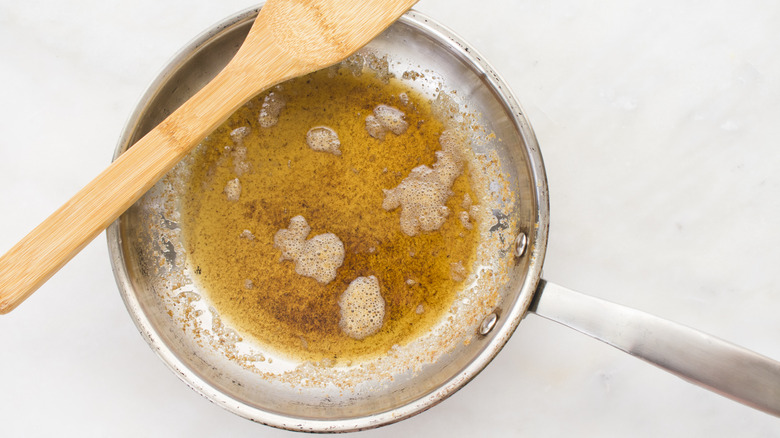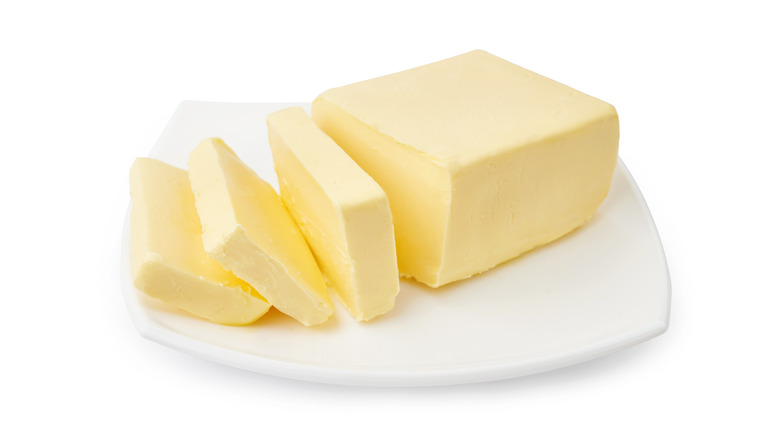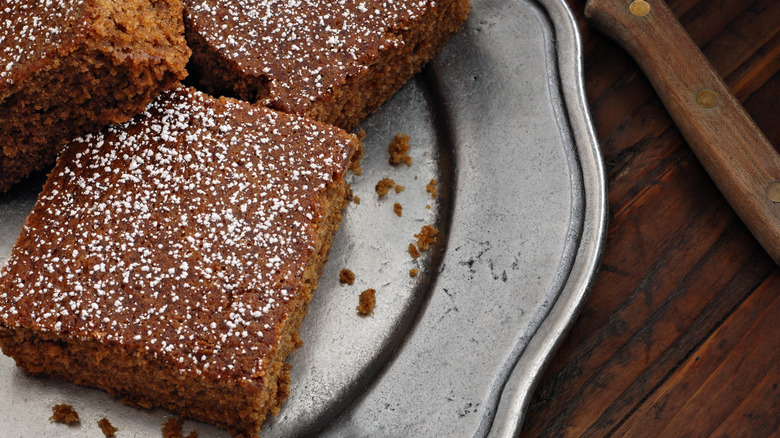Tell-Tale Signs That Your Brown Butter Is Ready
Butter is an essential part of baking and cooking. It's used in just about every recipe on the planet, from sugar cookies to granola to spaghetti sauce. And while you typically see it in recipes as softened, hard directly from the fridge, and melted, there's one way to use it that adds incredible flavor — brown butter.
Brown butter, per Martha Stewart, is simply butter that is cooked until it turns brown. It has a nutty, rich taste and it even looks a bit like caramel. In fact, it smells like caramel or toasted nuts. The French term for brown butter is beurre noisette (per Dictionary.com), which translates to hazelnut butter. You can drizzle it over vegetables, add it to seafood, use it as a sauce for steak or chicken, add it to cookies and bars and cakes, and use it in frosting,
But the process of making brown butter, while seemingly simple, is more complicated than you think. That's because butter isn't just a solid lump of fat.
Making brown butter
Butter is made from cream that is churned so the butterfat separates from the liquid, which is buttermilk, per MasterClass. The fat is washed, then salted (or not), and formed. The key to browned butter is that there are more things in that stick of butter than just fat. Butter also contains milk solids, sugar, and water. And it's those components that make brown butter.
Milk solids are little bits of protein. Those solids, along with the sugar, are the key to brown butter. Under the heat, the proteins and sugars break down and combine, making hundreds of new compounds that give brown butter its characteristic look, taste, and aroma. The process is called the Maillard Reaction, according to The Washington Post.
Here's what happens. First, the fat melts. Then, the water gets to its boiling point, 212 degrees Fahrenheit, and starts to bubble and evaporate. That's why the butter in the pan starts to spit and crackle and foam, per Michael Symon (via Facebook). And that sound is the key to making brown butter. Once the water evaporates, the Maillard reaction is pretty much done, and the butter is brown. When the butter goes silent, it's time to take it off the heat. You will also observe a nutty brown color and the aroma will fill the area above the pan.
How to use brown butter
For the best brown butter, use unsalted butter, per America's Test Kitchen; it foams less than salted butter which makes it easier to judge the color change. And don't use a dark nonstick pan; pick one that is light, like stainless steel, so you easily see the color. Cook the butter over medium-low heat so the flavor and color have time to develop. And don't use a pan that's too big or the butter will brown too quickly and may burn.
Your pan of silent, browned butter is ready. Get the pan off the heat and pour the butter carefully into a heatproof bowl or add another liquid to stop the browning process. Symon says there isn't much time between perfect brown butter and burned butter, so be watchful and act quickly.
Now that you have brown butter, what are you going to do with it? You can make an incredible brown butter ice cream. Try a recipe for a rich and flavorful brown butter peach cobbler or brown butter gingerbread which both have wonderfully complex flavors. And after you have brown butter mashed potatoes, you likely won't make that recipe any other way.


